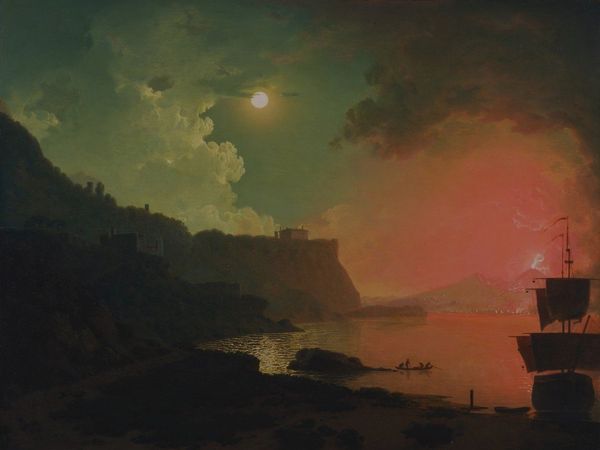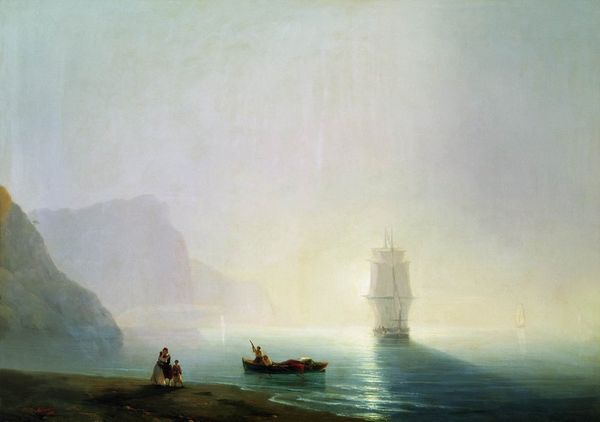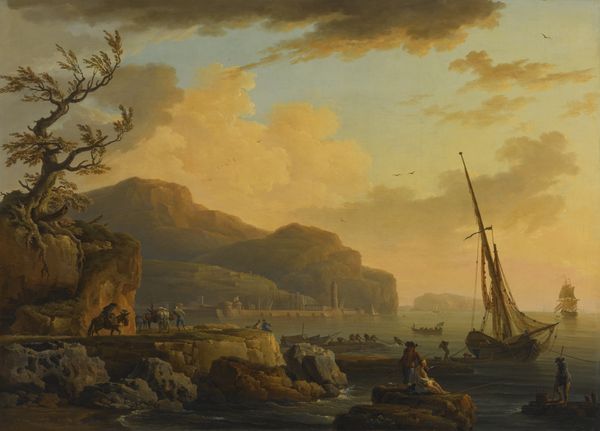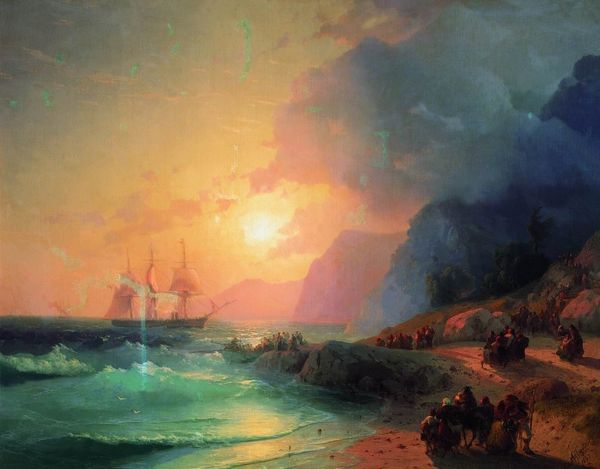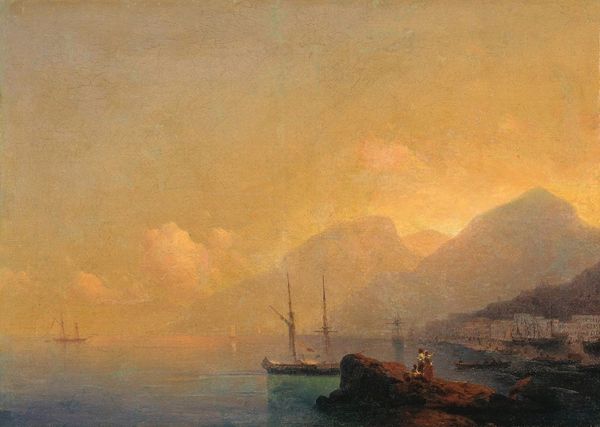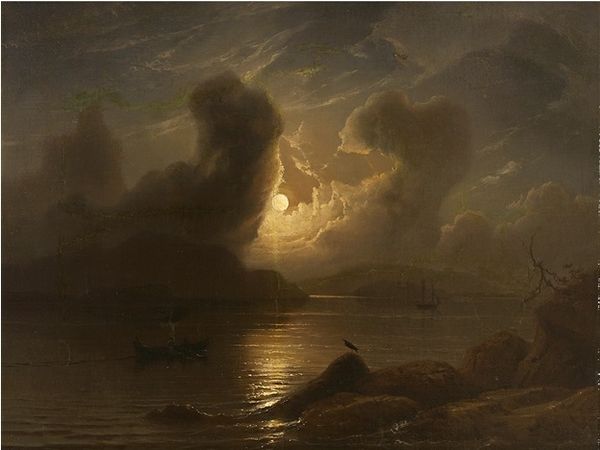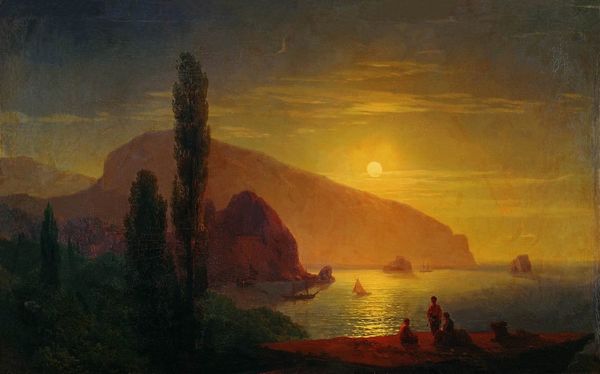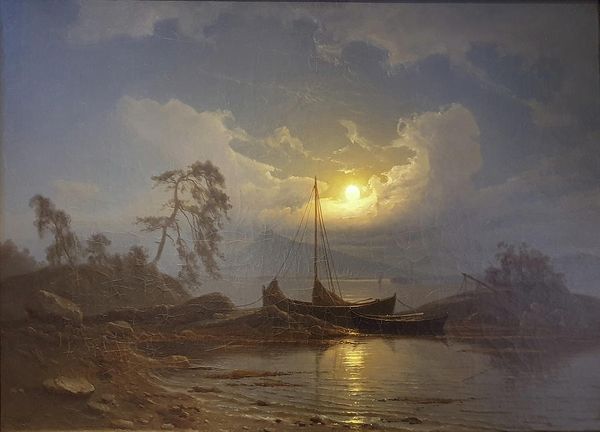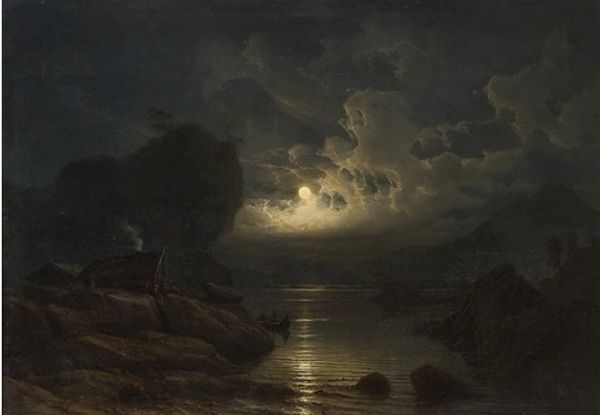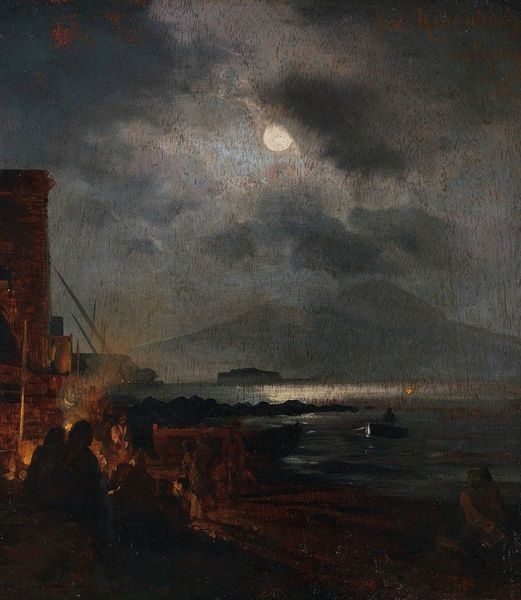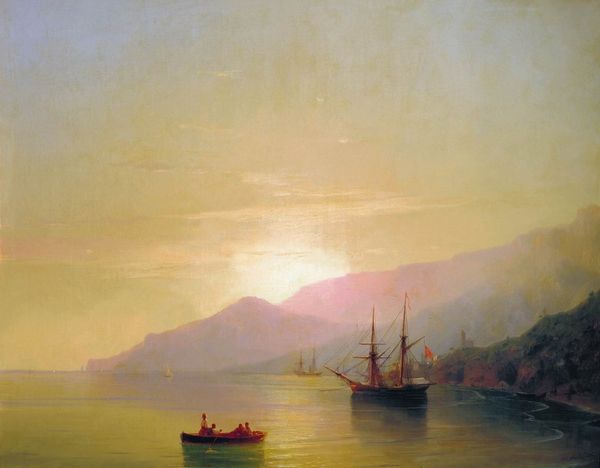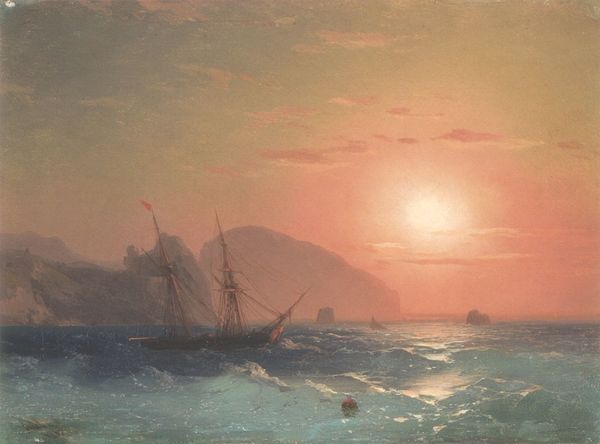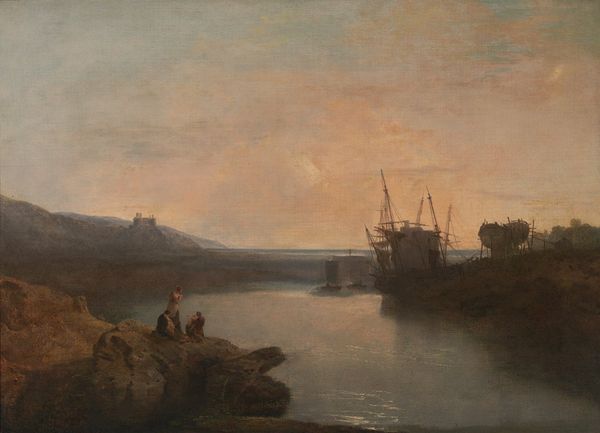
painting, oil-paint
#
painting
#
oil-paint
#
landscape
#
romanticism
#
history-painting
#
sublime
Copyright: Public Domain: Artvee
Joseph Wright of Derby captured Vesuvius in eruption from Posillipo using oil paints. The volcano, an age-old symbol of nature’s raw power, dominates this canvas, looming large in human consciousness. Consider how the image of the volcano recurs throughout art history; compare this fiery spectacle to depictions of Mount Etna in ancient Roman frescoes. Here, the volcano is not merely a mountain, but a force of destruction and creation. Like the mythical phoenix, it embodies both ends and new beginnings. The sublime terror it inspires taps into our collective memory of cataclysmic events, resonating with primal fears and awe. Volcanic imagery has been passed down, shifting from divine wrath to scientific curiosity, embodying a continuous fascination with nature's capacity to overwhelm. This image touches something fundamental: the enduring human struggle to understand and reconcile with nature’s dual capacity to nurture and destroy. Its cyclical pattern reminds us that even in destruction, the seeds of rebirth are sown.
Comments
No comments
Be the first to comment and join the conversation on the ultimate creative platform.
